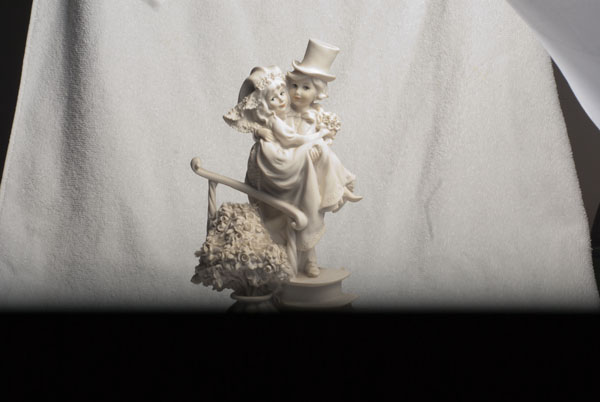The Flash
What is the flash? Well... it's not lightning. It is a small lighting device that fires hard light shot at the moment when your 1st curtain is fully pulled up. However, it does not wait before the 2nd curtain begins to pull up. This causes black stripes or even total blackness in the image.
To avoid this, you need to keep your shutter speed below the flash sync speed. This is usually 1/200s or 1/250s. Read your camera's user's manual to find out the sync speed, or experiment with flash and shutter speeds in a dark area if you need to find out yourself.
Another way to avoid flash-blackouts, is to put your camera in High-Speed sync mode. This will allow you to shoot with higher shutter speeds, however only an external flash is going to allow you to do so.
Another anomaly is when moving objects do not really look like they really should on a picture. Take a moving car for example: normally (with 1st curtain sync) the flash fires at the Start of the exposure. This is freezing the car and the rest of the way where the car is moving there is blur. Feels like the car was in Reverse. To avoid this, put your camera into 2nd curtain sync, this will freeze the car at the End of the exposure, thus recording the blur first, and at the end freezes the subject. You can also avoid faces distorted because of post-flash movement, as 2nd curtain sync freezes th
Flash can be very useful when illuminating scenes of darkness, however you won't have time to check your meter readings during flash fire, so you might need to change some things one you've reviewed your first pictures. To avoid this, you need to know what aperture settings you need to use with a certain ISO setting and subject distance.
E.g.: this could be that with ISO 200 at 1.5 meters the aperture needs to be at f/16.
This means that the flash is fairly birght, a normal film (ISO 200) picks up quite a lot of light from 1.5meters. If you distance yourself to ~3 meters this will drop to a value of f/5.6. It usually drops with 1 full-stop each half meter.
Tip: If you are using a flash at close range and the image gets over exposed, try to move away a bit if you cannot decrease the flash power. But don't move too much! Flash light power decreases 2x as fast as you increase your distance.
E.g.: if flash power @ 1m is "1" -> flash power @ 2m will be "0,25" and @ 4m it is "0,0625" which is a very weak value compared to the original power.
To avoid this, you need to keep your shutter speed below the flash sync speed. This is usually 1/200s or 1/250s. Read your camera's user's manual to find out the sync speed, or experiment with flash and shutter speeds in a dark area if you need to find out yourself.
Another way to avoid flash-blackouts, is to put your camera in High-Speed sync mode. This will allow you to shoot with higher shutter speeds, however only an external flash is going to allow you to do so.
Another anomaly is when moving objects do not really look like they really should on a picture. Take a moving car for example: normally (with 1st curtain sync) the flash fires at the Start of the exposure. This is freezing the car and the rest of the way where the car is moving there is blur. Feels like the car was in Reverse. To avoid this, put your camera into 2nd curtain sync, this will freeze the car at the End of the exposure, thus recording the blur first, and at the end freezes the subject. You can also avoid faces distorted because of post-flash movement, as 2nd curtain sync freezes th
Flash can be very useful when illuminating scenes of darkness, however you won't have time to check your meter readings during flash fire, so you might need to change some things one you've reviewed your first pictures. To avoid this, you need to know what aperture settings you need to use with a certain ISO setting and subject distance.
E.g.: this could be that with ISO 200 at 1.5 meters the aperture needs to be at f/16.
This means that the flash is fairly birght, a normal film (ISO 200) picks up quite a lot of light from 1.5meters. If you distance yourself to ~3 meters this will drop to a value of f/5.6. It usually drops with 1 full-stop each half meter.
Tip: If you are using a flash at close range and the image gets over exposed, try to move away a bit if you cannot decrease the flash power. But don't move too much! Flash light power decreases 2x as fast as you increase your distance.
E.g.: if flash power @ 1m is "1" -> flash power @ 2m will be "0,25" and @ 4m it is "0,0625" which is a very weak value compared to the original power.





